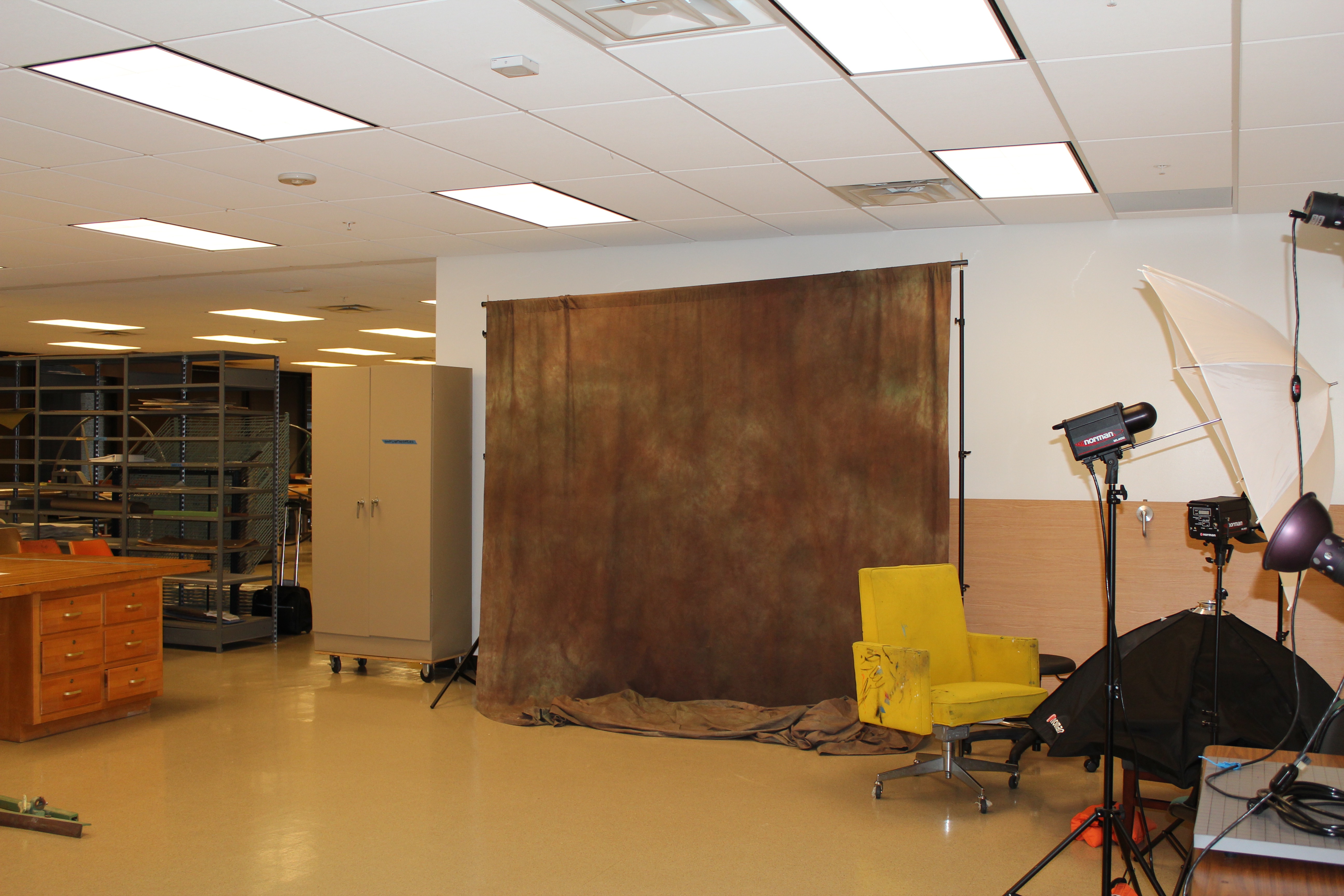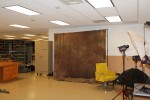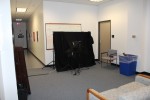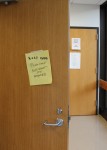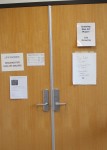Lighting studio resolution developing
In a corner of the Arbor Building’s printmaking shop stand several photography lights, a couple of lighting umbrellas, an old chair and a large, brown backdrop. This is the new lighting studio; separated from printmaking by only some open shelves.
Stuart Larson, department chair of communication and studio arts in the School of Human Sciences and Humanities (HSH), explained that the need to reallocate the old lighting studio space in the Arbor Building came as a result of the four-year initiative. After UHCL became a four-year university, more than 50 new faculty were hired, most of them in the School of HSH.
Because of the limited existing space, Larson explained, the Provost, President and HSH Dean all toured the campus searching for potential office space for the new HSH faculty. During the summer, the digital photography lighting studio was reallocated for this purpose. A temporary lighting studio was set up in the digital graphic meeting/locker area of the printmaking shop. A second lighting studio was set up inside the equipment checkout room in the Bayou Building.
Michael Brims, assistant professor for digital media studies, said that he understands the need for office space, but he would have liked better communication. Brims found out about the studio changes from a student.
“If you need new offices, you need them,” Brims said. “I don’t want my colleagues sitting on the grass outside. It seemed to be a decision that was made without any involvement of the people using these studios.”
The change came as a surprise to art, communication and DMST students, and to some faculty as well. When digital graphic students arrived for the fall semester, they spent their first classes looking for their lockers, which had been scattered in various locations on campus. When they went to the lighting studio, they found offices.
“They all have that glazed look on their faces, like they’ve entered the ‘Twilight Zone,’” said Caye Trahan, suite secretary of the new HSH faculty offices. “I kindly redirect them.”
The old lighting studio was large enough to accommodate up to 20 students, and had enough space to set up and experiment with the lighting without obstruction. The area shared with the printmaking shop is smaller, open, and exposed to natural light.
“You cannot control the lighting in the lighting studio,” said Levi Rosen, graduate studio art major.
It is easier to control the lighting in the equipment checkout area, contends Kevin Naranjo, TA and graphic design major, but that space is even smaller, he explained, limiting shoots to tabletop photography.
Rosen argues that another issue is the lack of privacy. Printmaking students have two entrances: one through the drawing classroom and another through the lighting studio area. Printmaking students must often choose between interrupting a class or walking in on a model.
“The lack of space disrupts the instructors ability to teach the proper techniques of the lighting studio process,” said Naranjo, who as a TA, says he finds himself in a position to see how the change has affected the students.
HSH Dean Rick Short affirmed that the reallocation was necessary, and the decision was made with consideration and input from administrators and faculty.
“Student success is a top priority, and ensuring adequate and appropriate space for teaching and research activities is a part of that commitment,” Short said.
“I brought him [Jason Makepeace, program director for art and design] in as soon as I found out,” Larson said. “I explained things to him, so together, he and I did have input.”
Rosen maintains however, that the new lighting studio is completely useless.
“They haven’t done anything to make it serviceable, and yet they built the offices right away,” Rosen said. “Just imagine 40 students going through that process in one small room [on a deadline]. That’s a recipe for disaster.”
Larson explained that although construction has not started yet, the current room should be finished by January. The plan is to enclose the area over winter break and have separate entrances for the printmaking shop and the lighting studio.
“When classes start in January,” Larson said about the current lighting studio, “we will have a fully-functional, top-of-the-line, state-of-the-art lighting studio.”
Brims said that the faculty started having to improvise a “make-shift” solution at the beginning of the semester.
“I think that might not shed the best light on how we handle things logistically,” Brims said. “It makes us look a little bit bad.”
Larson asserts that he tried to minimize the impact or the disruption on the art classes. He also said that Dean Short was very receptive to their input.
Rosen believes that the old studio was reallocated because it didn’t “look used” and it is his understanding that the offices may be changed back to a lighting studio in three years, after the STEM building is finished, but only if they can prove that they need it.
Larson’s challenge is to prove they need it.
Because all art and communication students are required to take digital photography, Larson points out that on a busy semester, there could be as many as 120 students eligible to use the lighting facilities.
In the meantime, Larson believes it is necessary to prove that digital photography needs that space. He says it is their responsibility “to really prove that we have a demand for that space, to make that demand very visible.”
Click to enlarge the images.

